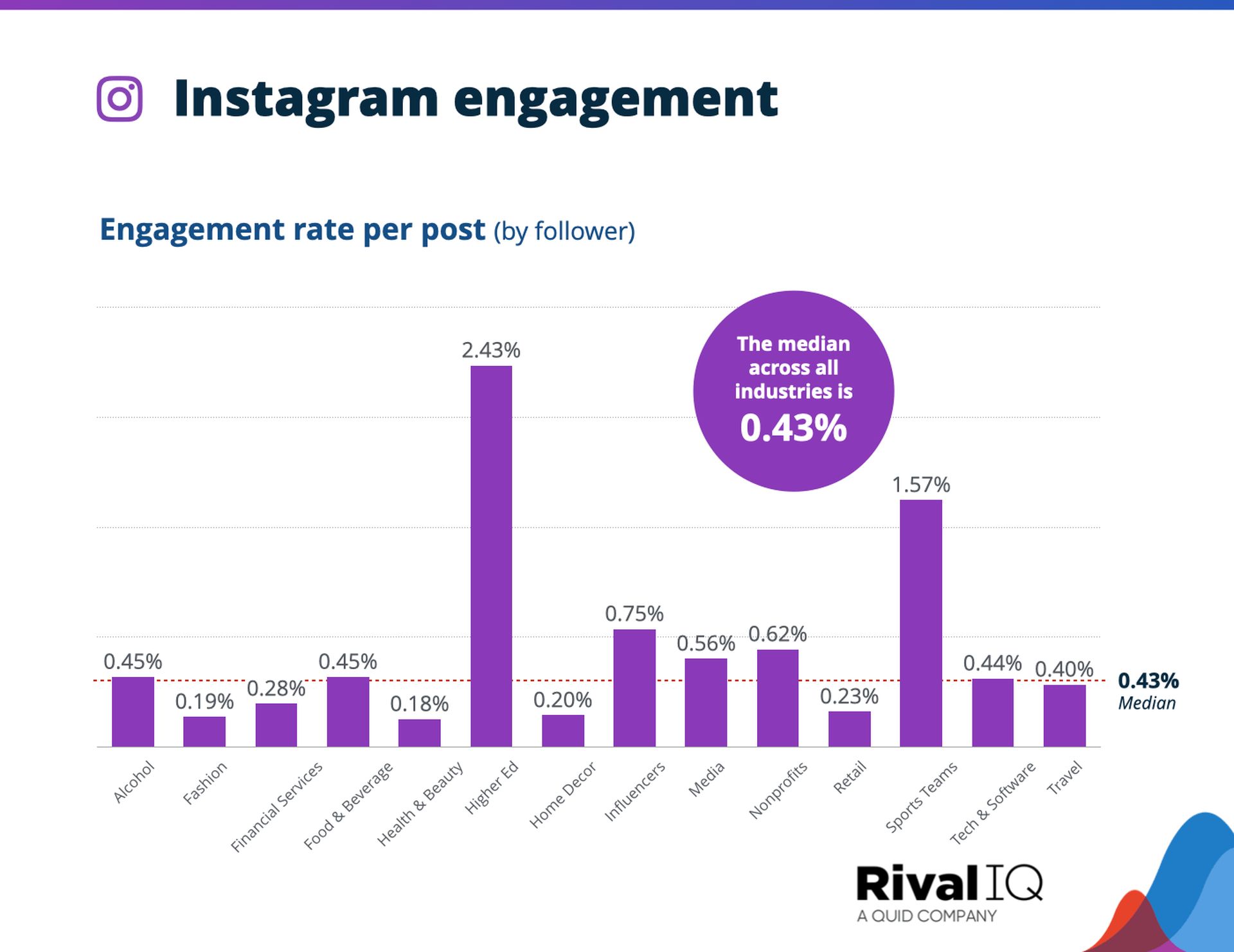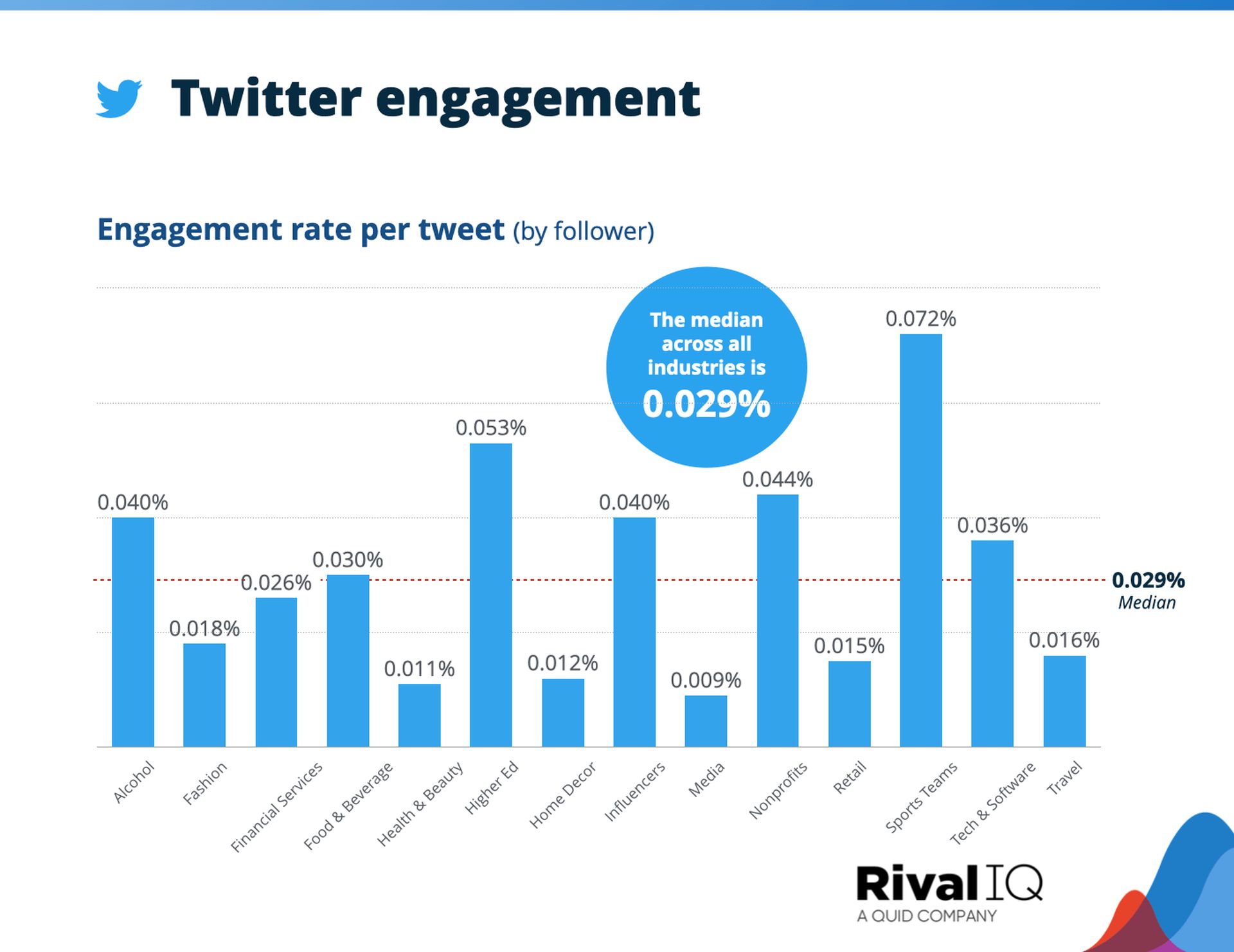In light of recent shifts in social media referrals—observed as a general downturn across numerous sectors—it’s challenging to accurately assess the impact and performance of one’s content. This raises questions: Are the observed declines indicative of a failing strategy, or are they due to the platforms themselves limiting reach and engagement?
Statistics don’t lie
The newest Social Media Benchmarks report from Rival IQ sheds light on this dilemma, offering a glimpse into the engagement rates brands are experiencing on major platforms. This comprehensive analysis, derived from an extensive dataset encompassing over 5 million posts and upwards of 10 billion interactions such as likes, comments, and favorites on Facebook, Instagram, TikTok, and Twitter, provides valuable insights.
Although the report delves into detailed industry-specific findings, this summary will focus on the overarching engagement trends observed.
| Social Media Platform | Key statistics |
| Median engagement rate for all industries at 0.063%, slight improvement from last year’s 0.060%. | |
| Overall engagement rate declined to 0.43%, down from 0.98% in 2021. | |
| X (formerly Twitter) | Average engagement rate of 0.029%, slight decrease from last year’s 0.035%. |
| TikTok | Average engagement rate of 5.69% per clip last year, halved over the course of a year but still higher than other platforms. |
Facebook: Steady reach and engagement over time
Diving into specifics, starting with Facebook, the latest figures reveal a median engagement rate for all industries at 0.063%, marking a slight improvement from the previous year’s 0.060%. The data highlights that sectors such as sports see higher engagement rates, elevating the overall average, with influencers, higher education, and alcohol brands also maintaining robust engagement levels on the platform.
However, it’s important to note that even the top-performing categories achieve engagement from only a small fraction of their audience. This observation suggests that reach might be a more relevant metric for assessment, given that the majority of users tend to passively scroll through social media without actively engaging with content.

This raises a pertinent question: Is social media losing its efficacy as a marketing channel? The answer isn’t straightforward. While direct engagement may be declining, the value of social media in building brand awareness and driving indirect actions remains significant.
In an era where passive consumption dominates user behavior on social platforms, reevaluating key performance indicators (KPIs) to focus on outcomes such as sales, email sign-ups, and other tangible metrics could provide a more accurate gauge of social media’s impact on business objectives.
Instagram: Lower engagement rates
Shifting focus to Instagram, the platform has witnessed a slight dip in overall engagement rates, descending to 0.43% in the current year from higher figures in the past. The trend on Instagram reveals a continuous decline in engagement for brands, with a notable drop from an average of 0.98% in 2021.
This significant reduction, more than halving the engagement rate over a few years, underscores the challenges posed by increasing competition and evolving user behaviors. Particularly, Meta’s shift towards AI-driven content recommendations has contributed to this decline, as these changes affect how frequently users encounter and interact with brand content.

X or Twitter: Lowest average engagement rate
Rival IQ’s analysis extends to the platform still widely recognized as Twitter, observing an average engagement rate of 0.029%. Despite the platform’s rebranding efforts under Elon Musk’s ownership, its capacity to generate referral traffic for brands remains limited, showing only a marginal decrease from the previous year’s 0.035%. Musk’s explicit stance on not prioritizing brand referral traffic has set expectations accordingly. Yet, the slight dip in engagement rates, while not drastic, contributes to the broader trend of declining interactions across social media platforms.

TikTok: High engagement rate
Lastly, turning our attention to TikTok, Rival IQ’s report reveals a noteworthy downturn in brand engagement on the platform. With an average engagement rate of 5.69% per clip in the previous year, the rate of engagement from TikTok referrals has halved over the span of just one year.
However, it’s crucial to note that despite this decline, TikTok’s brand engagement rates still surpass those of other social media platforms. This indicates that although there has been a reduction in engagement, the opportunity for brands to capture attention and interact with their audience on TikTok remains substantial.
This is especially true as user interaction patterns evolve, TikTok’s algorithm undergoes adjustments to prioritize different types of content, and the competition intensifies with more brands actively posting. For brands that navigate these changes successfully, TikTok continues to offer a fertile ground for engaging with a wide and varied audience.

In summary
- TikTok emerges as the best social media platform for brands aiming for high engagement rates. Despite a significant decrease in its average engagement rate from 5.69% per clip last year to roughly half that value, TikTok’s engagement rates still surpass those of other platforms.
- Facebook shows a marginal improvement in its median engagement rate, rising from 0.060% to 0.063%, signaling a stable, albeit low, level of user interaction. This slight increase suggests that while Facebook may not offer the highest engagement rates, it maintains a consistent performance that could benefit brands looking for steady reach and engagement over time.
- Instagram, on the other hand, has seen a steady decline in engagement rates, falling to 0.43% from a much higher rate of 0.98% in 2021. This trend indicates that Instagram’s environment is becoming increasingly challenging for brands seeking to engage with their audience, likely due to increased competition and changes in content recommendation algorithms.
- X (formerly Twitter) displays the lowest average engagement rate among the platforms analyzed, at 0.029%, slightly down from 0.035% the previous year.
Featured image credit: Alexander Grey/Unsplash





